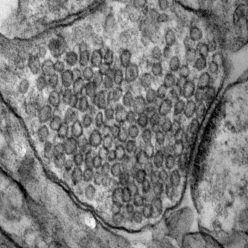Overview

Our brains allow our body and mind to function. The human brain is made of billions of cells that together give us the ability to perceive the world, think, learn, remember, take actions, etc.
Synapses are points of communication between excitable brain cells (neurons) that together form brain circuits. The extraordinary ability of synapses to change their strength in response to experience is known as synaptic plasticity. Current scientific evidence suggests that synaptic plasticity underlies the formation of new memories and requires the correct functioning of hundreds of synaptic proteins.
The Vargas-Caballero laboratory focuses on studying the properties of synapses that allow plasticity to occur. We investigate how these synaptic properties change with normal ageing and how they are affected by neurological diseases that affect memory such as Alzheimer’s Disease.
Research interests
Alzheimer’s Disease
Although our understanding of Alzheimer’s disease has greatly increased in the last few decades, there is currently still no effective therapy that can stop disease progression. Our current knowledge suggests that this disease initially impacts on synapse integrity in the brain: the mechanisms, however, are not well understood.
Our main aim is to understand how memories become disrupted in Alzheimer’s disease. We use electrophysiological experiments, molecular and behavioural analyses to link synaptic function and plasticity in experimental models of Alzheimer’s disease.
